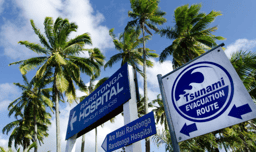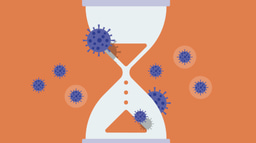The race against COVID-19
Published in Bioengineering & Biotechnology
The pandemic Coronavirus Disease (COVID-19) concerns people all over the world. It has forced closedown of borders, lockdown of cities, proactive closure of schools/universities/labs in multiple countries, cancellation of events including scientific conferences and triggered a series of chain reactions, harming the global economy.
Various biopharmaceutical companies and organizations, such as Moderna/NIH, Medicago, Inovio, Clover/GSK, and Chinese Academy of Military Medical Sciences have announced potential COVID-19 vaccine candidates. More excitingly, Moderna/NIH and Chinese Academy of Military Medical Sciences have begun their clinical trials. However, health officials estimate that it may still take 1 year to 18 months to achieve the production and distribution of vaccines [1, 2]. Repurposing existing antiviral strategies and vaccines could provide a shortcut. Writing in Nature Nanotechnology, Hu et al. [3] comment on the fact that chloroquine, which is an FDA-approved drug for the treatment of malaria, inhibits endocytosis of nanoparticles in the same size range as viruses and discuss the potential of this drug against COVID-19. Indeed, chloroquine has already been put in practice for the treatment of COVID-19 patients in China since Feb. 19, according to the sixth version of Guideline Over the Diagnosis and Treatment of COVID-19 [4]. The guideline was updated on March 3rd still including chloroquine. Chloroquine is not highly efficient but it is beneficial and side effects are minor, according to Chinese health officials [5,6]. The clinical trials in China also suggests Favipiravir, the antiviral drug developed by Toyama Chemical to treat flu, shows good clinical efficacy against the COVID-19 and are being included into the treatment plan [7]. Doctors in Japan now are also using Favipiravir to treat COVID-19 patients with mild to moderate symptoms to inhibit the mutliplication of the virus [8]. But the drug does not work that well on people with more severe symptoms, noted a Japanese health ministry source [8].
Investigations and tests of several potential drugs and therapies are also being conducted. Remdesivir, developed by Gilead Sciences, showed promising in vitro and in vivo performance against the coronaviruses that caused Middle East respiratory syndrome (MERS) in 2012 and the coronavirus that caused severe acute respiratory syndrome (SARS) in 2003 and has been described as the “most promising candidate” against COVID-19 [9-11]. Results of clinical trials of Remdesivir, currently under way in China [12], are expected to be released at the end of April, which hopefully will be followed by the results of clinical trials conducted in the US and other countries [13, 14]. Moreover, early clinical trials in China suggest that convalescent plasma therapy, which has previously been used to treat SARS and Ebola infections [15], is effective in curing high-risk patients with COVID-19 [16]. Takeda has also begun with the development of a plasma-derived therapy. In addition, Eli Lilly/AbCellera, Biogen/Vir and Regeneron have started to work on antibody-based therapies.
However, the development of prophylactics and therapeutics requires time to ensure adequate preclinical and clinical testing and ultimately, efficacy against COVID-19. The spread of the coronavirus needs to be slowed down to win us time to wait for that. Otherwise, the rapidly accumulated number of patients is going to overwhelm the health care capacity, resulting in an increased fatality rate. Various countries have identified the most effective way for mitigation to be identification and isolation of infected people as well as tracing of their close contacts. For example, South Korea substantially scaled-up the number of coronavirus tests and isolations thereby, could decrease spreading of the virus after the large outbreak. The South Korean government has quickly given approval to four companies for the manufacturing of test kits following the initial COVID-19 outbreak reported in Wuhan, China, and has set up a network capable of running 20,000 tests per day [17]. They further built drive-through centres, at which swab tests can be collected for COVID-19 diagnosis. Indeed, the car serves as an isolated waiting room. This model is now being followed by the US, which are also working on increasing testing capacities.
Immediate and accurate testing was a big challenge at the beginning of the outbreak in Wuhan, Hubei, the epicenter of COVID-19 in China. Nucleic acid test kits were not available in Hubei province until January 16. The initial unavailability of test kits and frequent false negatives at the beginning of the outbreak resulted in more infections than the official figures indicated and delayed the isolation of infected patients. On February 12th, Chinese health authorities modified the guidelines to include computerized tomography (CT) scans for the diagnosis and confirmation of infections, which led to an update of 14,840 new cases on the 13th of February single day, a daily record, with a new category of patients ‘confirmed by clinical diagnosis’ [18]. However, this category was then removed on the following day, as the guideline was again updated stating that a positive nucleic test result remains the only way to confirm infection, because pulmonary symptoms develop gradually and may be caused by other infections. Fortunately, adequate test kit supply could be guaranteed soon afterwards, as the Chinese National Medical Products Administration has fast-tracked the approval of 10 new coronavirus nucleic acid detection reagents and 6 antibody detection reagents [19].
Antibody tests need to be used in conjunction with other testing regimes to confirm infections, because antibody titres remain below the detection limit during the first few days of infection. However, straightforward operation of chemiluminescence immunoassays and colloidal gold nanoparticle probe-based immunoassays enable fast identification of asymptomatic patients and patients with mild symptoms, which allows the subsequent contact tracing/mandated quarantines without any delay. Scientists are currently also developing antibody test kits to allow self-diagnosis at home [20]. The nucleic acid test based on RT-PCR and next-generation sequencing in combination with antibody detection can greatly improve the identification and isolation rate. Moreover, quantification of antibodies against the new coronavirus can also be used to assess whether a convalescent survivor is qualified to donate convalescent plasma. In addition, diagnosis based on the identification of viral proteins, for instance, the E25Bio test developed by Lee Gehrke [21], is also on its way, which will allow fast diagnosis without any delay using simple setup. This will for sure further improve the identification and isolation.
It is also worth noticing that aside from the identification and isolation, how individuals respond to the advice of social distancing and mandatory quarantine, is equally important [22]. The race against COVID 19 will therefore be won only if science supported by the necessary social behavior.
[1]https://www.cnbc.com/2020/03/1...
[2]https://www.cnbc.com/2020/03/1...
[3]Hu et al. https://www.nature.com/articles/s41565-020-0674-9
[4]http://www.gov.cn/zhengce/2020-02/19/content_5480958.htm
[5] http://news.sciencenet.cn/htmlnews/2020/2/435861.shtm
[6]http://big5.cctv.com/gate/big5/news.cctv.com/2020/02/28/ARTI7bHiISLdC6JMBiCgOxIs200228.shtml
[7] http://www.xinhuanet.com/english/2020-03/17/c_138888102.htm
[9]https://www.nature.com/articles/d41587-020-00003-1
[12] http://apps.who.int/trialsearch/Trial2.aspx?TrialID=NCT04252664
[13]https://clinicaltrials.gov/ct2/show/record/NCT04292899
[14]https://clinicaltrials.gov/ct2/show/NCT04280705
[15]WHO reference number: WHO/HIS/SDS/2014.8
[16]http://www.xinhuanet.com/english/2020-02/28/c_138828177.htm
[17]https://www.bbc.com/news/world...
[18]https://www.reuters.com/articl...
[19] http://www.nmpa.gov.cn/WS04/CL2056/375681.html
[20]https://time.com/5805953/home-covid-19-test-everlywell/
[21]https://news.mit.edu/2020/covid-19-diagnostic-test-prevention-0312
[22]Anderson et al. THE LANCET. https://doi.org/10.1016/S0140-...





Please sign in or register for FREE
If you are a registered user on Research Communities by Springer Nature, please sign in